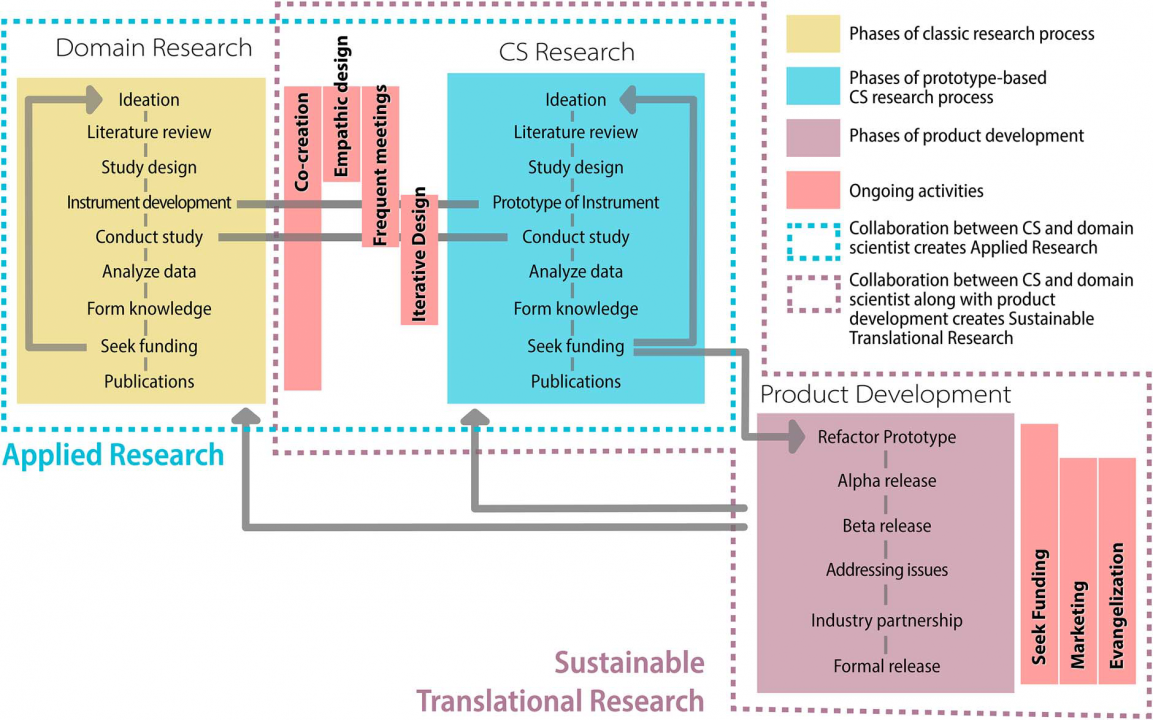|
|
||||||||||||||||||
Reflecting on the Scalable Adaptive Graphics Environment Team’s 20-Year Translational Research Endeavor in Digital Collaboration Tools
Authors: *
Publication: Department: Case Studies in Translational Computer Science, IEEE Computer Society URL: https://doi.org/10.1109/MCSE.2023.3297753 * Authors: Belcaid, M., Leigh, J., Theriot, R., Kirshenbaum, N., Tabalba, R., Rogers, M. University of Hawai’i at Manoa, Honolulu, HI Johnson, A., Brown, M., Renambot, L., Long, L., Nishimoto, A., University of Illinois Chicago, Chicago, IL North C., Harden, J., Virginia Tech, Blacksburg, VA Translational software research bridges the gap between scientific innovations and practical applications, driving impactful societal advancements. However, developing such software is challenging due to interdisciplinary collaboration, technology adoption, and post-funding sustainability. This article presents the experiences and insights of the Scalable Adaptive Graphics Environment (SAGE) team, which has spent two decades developing translational, cross-disciplinary, collaboration tools to benefit computational science research. With a focus on SAGE and its next-generation iterations, we explore the inherent challenges in translational research, such as fostering cross-disciplinary collaboration, motivating technology adoption, and ensuring post-funding product sustainability. We also discuss the roles of funding agencies, policymakers, and academic institutions in promoting translational research. Although the journey is fraught with challenges, the societal impact and satisfaction derived from translational research underscore its significance in the broader scientific landscape. This article aims to encourage further conversation and the development of effective models for translational software projects. Date: August 23, 2023 Document: View PDF |